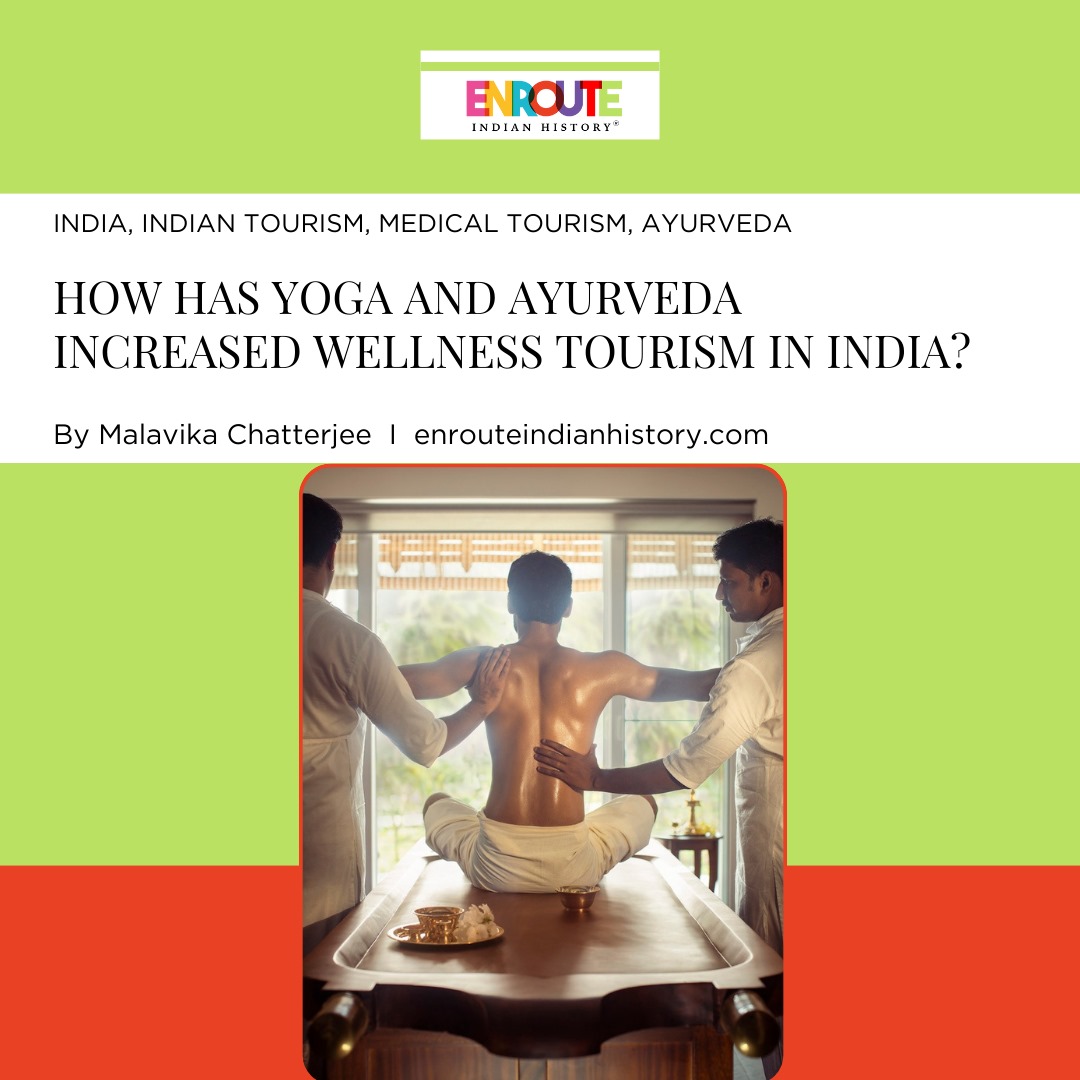
Yoga and Ayurveda are two of the most integral facets of Indian History and also one the highest sources of revenue for the Indian Tourism sector. The Wellness market, including all aspects of the wellness tourism sector and its associated fields, has been valued at 490 billion USD (ETTravelWorld, 2024). With Kerela and Uttarakhand at the forefront of Indian Wellness Tourism, the Government of India is focused on placing India at the top of this sector.
In the current global environment, which is rapidly growing and developing, chronic illness, poor mental health and drug-resistance-related issues have sky-rocketed. When the Pandemic hit, public fear turned into reality and pushed for a restructuring of lifestyles. There was a visible shift in public attitude towards seeking alternative and holistic healthcare remedies. However, India has been one of the leading destinations for it, even before the Pandemic.

Worldwide Wellness Tourism Spots
Source: Wellness Tourism – Global Wellness Institute
World Health Organisation defines Health as “a state of complete physical, mental, and social well-being and not merely the absence of disease and infirmity”. Similarly, Dunn opined that wellness is not just about being less sick but an “ever-changing panorama of life” that warrants its exploration in all possible ways (Dunn 1959). According to the Global Wellness Institute, Wellness Tourism merges tourism and wellness, two of the biggest multi-trillion-dollar industries, where most countries capitalise on their natural resources and package that into something attractive. However, Wellness Tourism, as a concept, has long been part of India, as, since ancient times, India has been a centre for Yoga, Meditation, Ayurveda, and traditional health-seeking practices. Foreign travellers record their fascination and interest in local, traditional and spiritual health practices from the country through their accounts. India was also known for pioneering medical practices that attracted many worldwide. Today, Wellness tourism in India is more like a curated vacation which is beautifully packaged and aesthetically pleasing, catered to a diverse population, hosted at attractive locations and has immense value-added benefits. Even though this aims to achieve commercial profit, at its core is the ancient Indian tradition of holistic well-being.
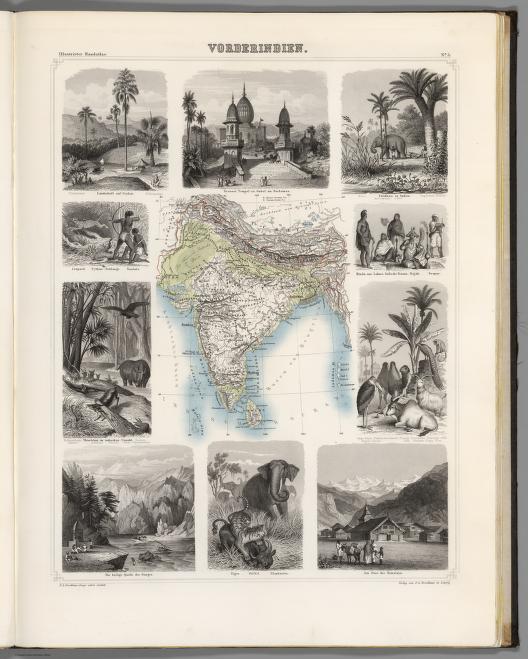
Vorderindien. Brockhaus, F.A., Leeder, Ehrenfried and Leutemann, Heinrich, 1863.
Source: https://www.davidrumsey.com/
Ayurveda
In Ancient India, before the canonisation of traditional health practices into the Vedas or Samhitas, the indigenous health-seeking behaviour considered the ‘inner-self’ or the soul to be of supreme importance. It was a common belief to nourish one’s soul for better health and the physical exterior. Although an esoteric concept based on spirituality, these traditional practices were holistic as they were conscious of the local ecology and resources.

The Susruta-Samhita or Sahottara-Tantra (A Treatise on Ayurvedic Medicine), Nepal, 12th-13th century. Source: LACMA Collections
In this manner, Ayurveda is an all-encompassing healthcare system of ancient India. It is an exhaustive manual on various traditional and natural healthcare remedies that are primarily preventative but also help maintain the overall well-being and treatment of certain diseases. It looks at the physical as well as mental health of an individual, going beyond to help with aspects of human consciousness, behaviour and environment (Sharma and Chandola 2015). According to Charaka Samhita, a wholesome diet that includes food and beverages suitable to the individual, daily meditation, charitable behaviour, and the pursuit of spiritual salvation would help prevent the contraction of diseases (Shree Gulabkunverba Ayurvedic Society, 1949, as cited in Shamra and Chandola 2015).
Yoga
Yoga means union or unity. It is an ancient practice geared towards the well-being of the mind, body and soul to transcend. It is a lifestyle that imbibes a holistic approach towards health, with the breath as its prime regulator. Asanas are part of yoga, facilitating good health through controlled postures and regulated breath. Physically, yoga helps fortify muscular strength, increase blood flow, and improve posture and flexibility while boosting mental health and happiness.
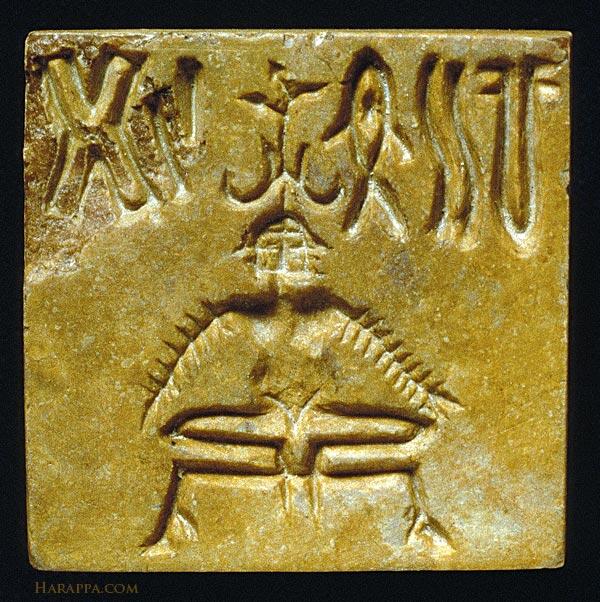
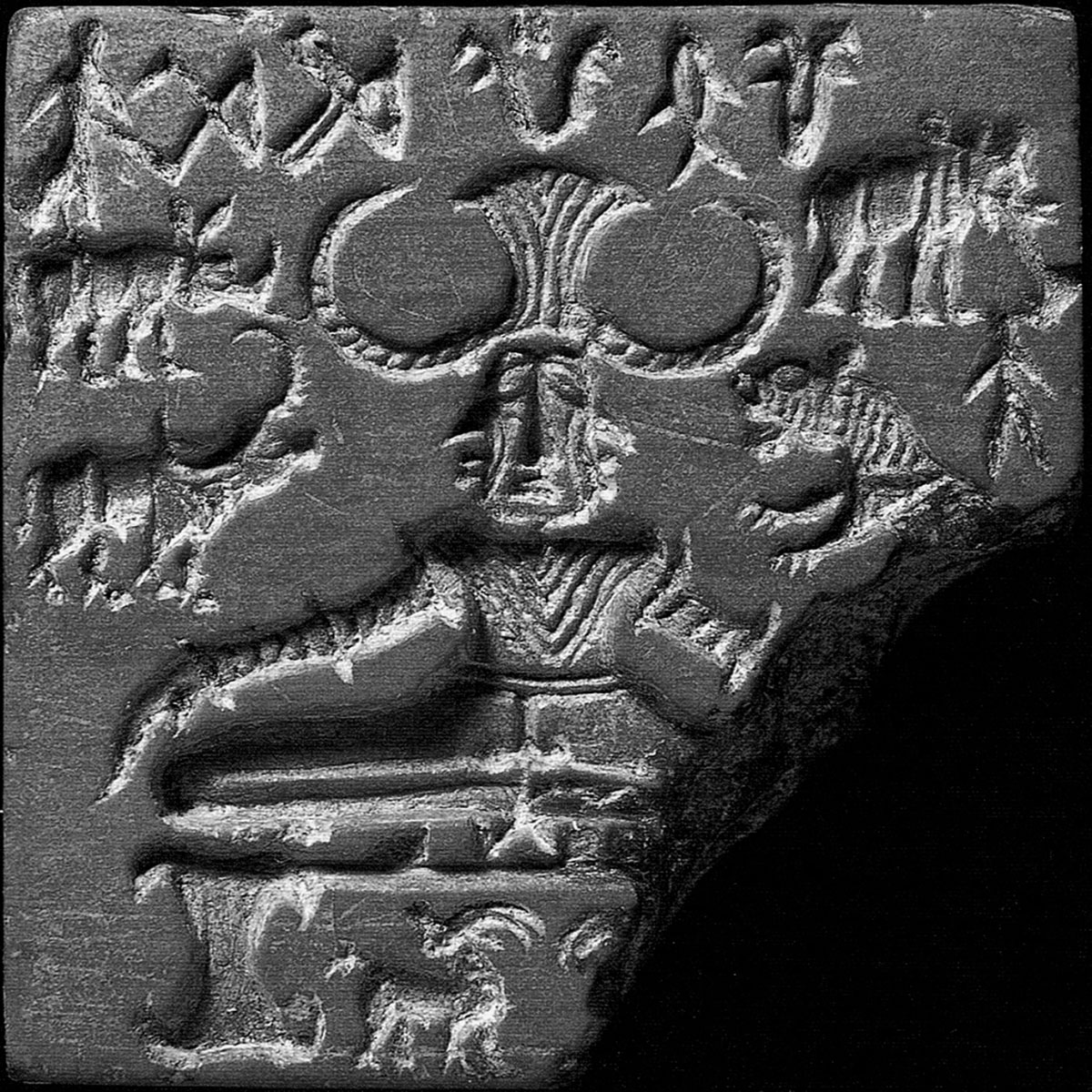
Possible representation of Yoga Asanas on seals from Harappan Civilisation
Source: Left: Seal, Mohenjo-daro | Harappa Right: Pashupati Seal – MAP Academy
The earliest representation of yoga possibly dates back to the Harappan Civilization in the form of seals from Mohenjo Daro. These depict a seated figure in the lotus pose, assigned the designation of Pashupati or Proto-Shiva. The knowledge of this ancient practice has passed through generations, from the Vedas, Upanishads, Samhitas, Yoga Yajnavalkya and many more. Later, Patanjali consolidated all this information into the standardised text on Yoga, the Yoga Sutra, which forms our present understanding of the practice. Since then, many foreign travellers and colonisers have been influenced by yoga, from Alexander the Great to Hsuan Tsang, Alberuni to Marco Polo to Dara Shikoh, to name a few. Even many former and current heads of state and celebrities practice yoga religiously.
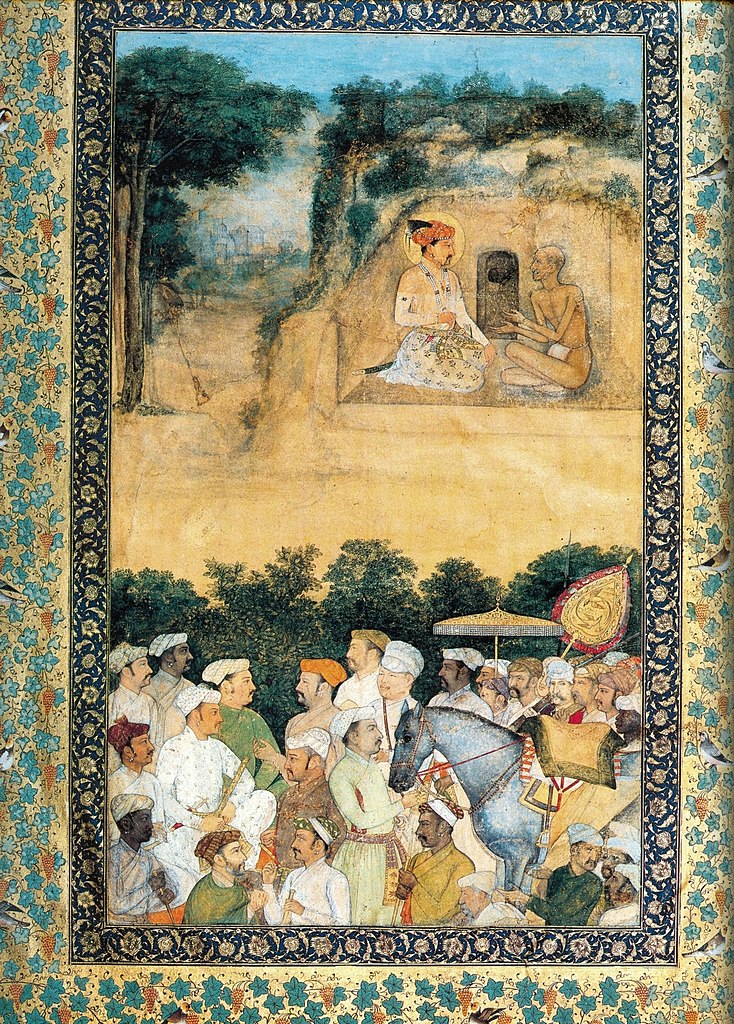
Jahangir visiting the ascetic Jadrup; attributed to Govardhan, Prayag | Musee Louvre
Source: As mentioned in Yoga: A Story in Art | The Heritage Lab
Medical Tourism
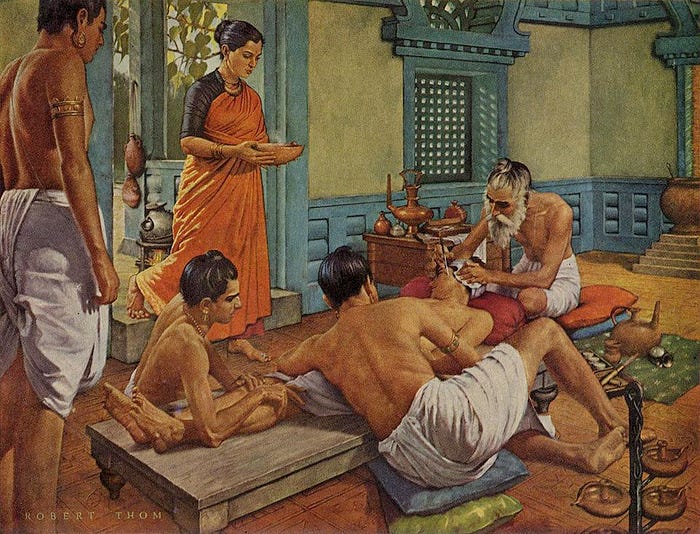
Painting depicting Susruta, the Father of Surgery by Robert Thom
Source: Sushruta & His Saṃhitā | Medium
Although not part of the Wellness tourism sector, Medical tourism or Medical Value Travel (MVT) in India has been highly profitable. The Indian Ministry of Tourism defines Medical tourism as “activities related to travel and hosting a foreign tourist who stays at least one night at the destination region” to maintain, improve or restore “health through medical intervention”. Medicine or medical treatment are more curative than preventive, more reactive than proactive, and therefore a combination of both, in conjunction with rehabilitative methods. Known as the ‘Pharmacy of the World’, India attracts many foreigners for cost-effective surgeries (as well as non-surgical health concerns) with state-of-the-art medical facilities, subsidised health care compared to most countries, and skilled medical staff, all of which are prime attractions for foreigners.
Places to Visit
The Ministry of Tourism of India validated the country’s position as the centre of Yoga, Ayurveda, Siddha and Naturopathy. These [practices and traditional spiritual philosophies are not only an integral part of the Indian way of life but have become a lifestyle choice by many worldwide. Yoga, for instance, is so popular that on the day of the Summer Solstice, on June 21, the world celebrates International Yoga Day. Last year, on 21st June 2023, approximately 180 countries got together to celebrate International Yoga Day, an unparalleled feat. According to Allied Market Research, in 2019, the global yoga market size was $37.5 billion. For 2027, projected estimates go beyond $66 billion. According to Smartscrapers, as of 15th March 2024, there are 3740 Yoga Retreats in India and counting (List Of Yoga Retreat Centers in India | SmartScrapers).
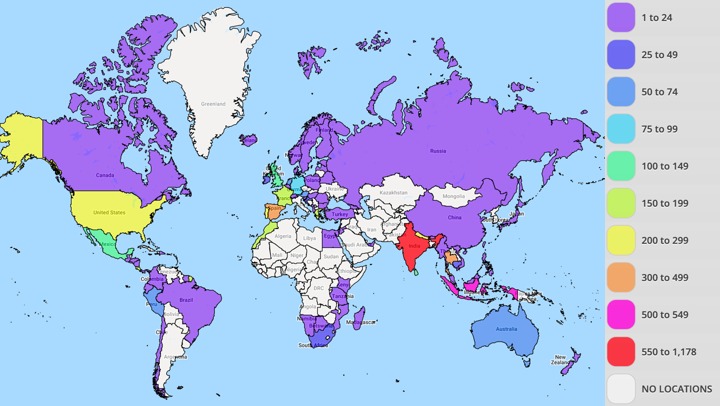
Source: @psdmccartney for The Wire
Where Does India Stand When It Comes to Yoga Tourism?
For Yoga
Rishikesh tops this list as the ‘Yoga Capital of the World’ where the week-long, annual International Yoga Festival takes place. The oldest and most highly sought-after Yoga retreat is the eighty-two-year-old Parmarth Niketan Ashram. Uttarakhand, in general, is a beautiful travel destination, with pristine views of the Himalayas, the Ganges flowing through its landscape, and many religious pilgrimage sites. The Ananda in the Himalayas is another popular and luxurious Yoga retreat facilitating Yoga, Ayurveda and a variety of spa therapies.
However, as with almost everything in life, there is another side to this optimistic picture that Rishikesh personifies, covered in depth by The Wire (Where Does India Stand When It Comes to Yoga Tourism?). Post-COVID-19, there has been a general shift in public attitude towards travel, and perhaps this is one of the main reasons why India’s position as the number one Yoga destination is dropping. According to The Wire, the 2021 forecast of top yoga destinations by BookYogaRetreats had India at the tenth spot, with France, Portugal, Spain, Germany, and even Greece surpassing India.
Websites like Incredible India, Condé Nast Traveller India and Business Insider recommend the International Centre of Yoga Education and Research and the Aurobindo Ashram in Puducherry and Ashtanga Institute in Mysore, Tamil Nadu. To the West in Maharashtra, we have the oldest centre for yoga in the world, the Yoga Institute at Mumbai and Ramamani Iyengar Memorial Yoga Institute in Pune.
For Ayurveda
If the north is for Yoga, southern India has proliferated through Ayurvedic practices. Kerela, popularly known as ‘God’s own Country’, is the travel destination for all things Ayurveda. From Ayurvedic massages to therapy to diet, retreats and Ayurvedic hospitals like Kalari Kovilakom and Kalari Rasayana are paving the way for the wellness tourism and hospitality sectors. Another popular establishment for Ayurvedic therapy is the Ayurvedagram Heritage Wellness Centre in Karnataka. In Maharashtra, the Tanman Ayurvedic Research Centre in Pune is notable.
Traditional Ayurvedic Massage and Therapy
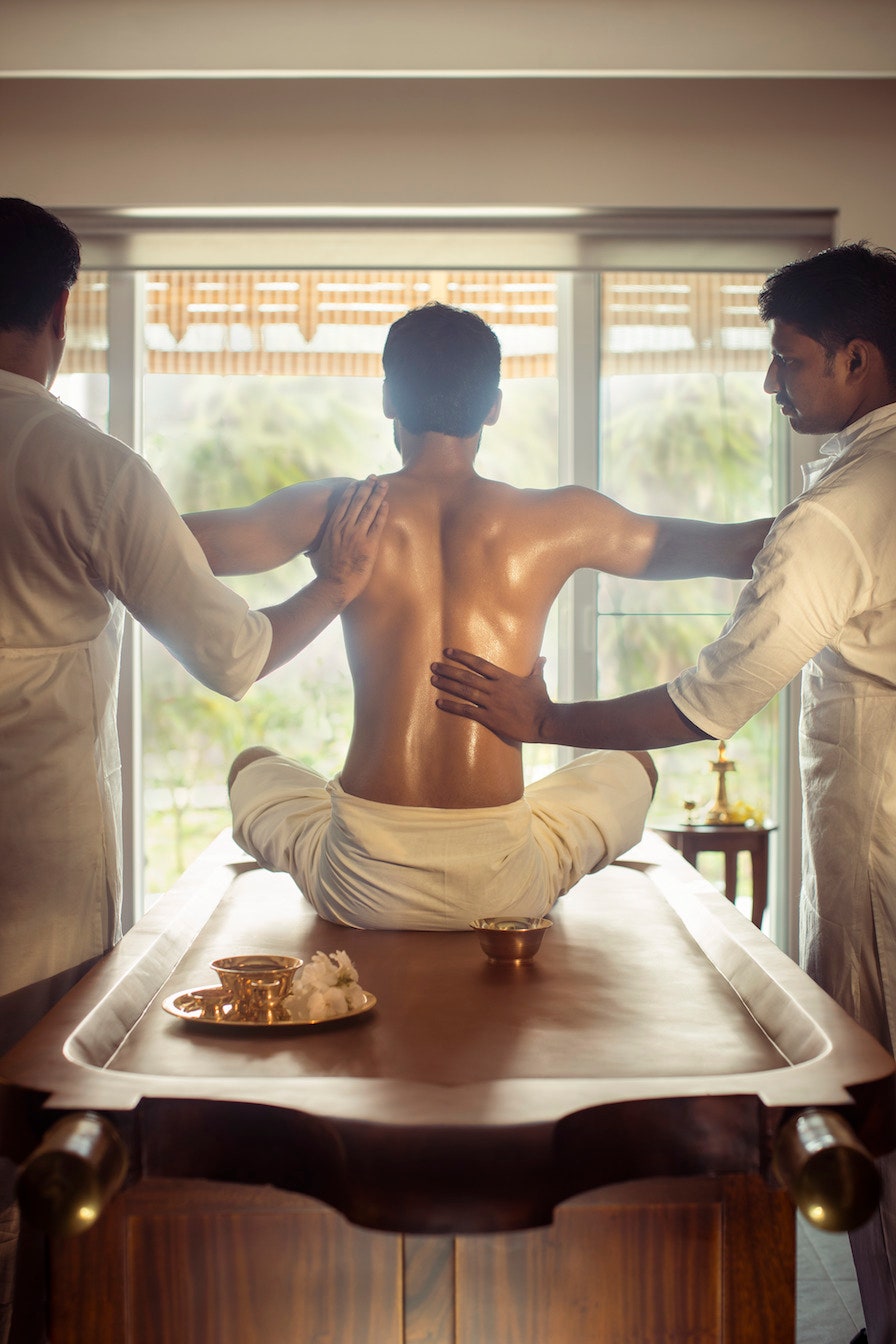
Source: Condé Nast Traveller India
Naturopathy, Spa Retreats and Tranquillity
India is also known for Naturopathy, a modern version of the traditional health-seeking practice that amalgamates traditional healthcare with modern-day scientific research. The Soukya Holistic Health Center in Bangalore, Karnataka, and Nimba Nature Cure Village in Gujarat are the top recommendations for those seeking the best of both worlds. For a lifestyle change or a simple change of perspective, one can visit The Art of Living organisation, with its headquarters in Bangalore, or opt for a pure meditation-based retreat at Igatpuri near Nashik, at the Vipassana International Academy. Goa, an already famous tourist destination in India, offers a mixed bag of almost everything one could seek concerning health care. Devayaa, The Ayurveda and Nature Cure Center, and Purple Valley are some of the best places to visit in Goa.
Dharmashala offers the seeking traveller peace of mind and tranquillity that they desire. The Tushita Meditation Centre focuses on the Tibetan Mahayana tradition. Another holy site is that of Varanasi, one of the oldest cities of India, which provides tourists with spiritual guidance through organisations like the Banaras Cultural Foundation, which facilitates guided walks of the city. Other iconic places that will help you escape the tribulations of your reality are the Vana Wellness Retreat, Dehradun, Uttarakhand; the Indus Valley Ayurvedic Centre, Mysuru, Isha Foundation, Coimbatore and Svaram Sound Experience in Auroville, Ponidcherry in Tamil Nadu; as well as the Mahabodhi International School of Meditation, Leh, Ladakh.
Road to Success
Thus, Ayurveda, Yoga, Naturopathy, and medical services make India the most sought-after travel destination, bringing in millions in revenue. The Wellness Tourism market is estimated at USD 19.43 billion this year and is expected to reach USD 26.55 billion by 2029, according to the growth forecast report for 2019-2029 by Research and Markets. The Ministry of Tourism, Government of India, recognises this and values its impact on the development of the country, attested through their efforts of successfully establishing the Ministry of AYUSH (Ayurveda, Yoga and Naturopathy, Unani, Siddha and Homeopathy) in 2014. Furthermore, the ‘Guidelines for the Accreditation of Wellness Centers’ by NABH were established in 2011 in consultation with AYUSH. Moreover, the 2022 National Strategy and Roadmap for Medical and Wellness Tourism laid a strong foundation for developing and promoting a brand like ‘Heal in India’ to boost the Wellness Tourism sector. The same year, the World Health Organisation published the International Standard Terminologies on Ayurveda, facilitating worldwide research and collaboration. Altogether, this has helped standardise and regulate the efficient treatment and high-quality hospitality.
At a global scale, popularising traditional Indian practices has solidified India’s position in the world economy while also strengthening the country’s soft power image. Overall, the pursuit of holistic well-being, beyond the physiological and encompassing the metaphysical, is not only a traditional way of life in India but has attracted people worldwide to reap its benefits and feel more in tune with their ‘inner-self’.
References:
Dunn, H.L. 1959. High-Level Wellness for Man and Society. American Journal of Public Health and the Nations Health, 49(6), pp. 786–792
Sharma, H.and Chandola, H.M. 2015. Ayurvedic Approach to Food and Dietary Supplements for the Brain and Neurologic Health. Bioactive Nutraceuticals and Dietary Supplements in Neurological and Brain Disease. pp. 173-177 http://dx.doi.org/10.1016/B978-0-12-411462-3.00018-7
Pandurangi, A.K., Keshavan, M.S., Ganapathy, V., and Gangadhar, N. 2017. Yoga: Past and the Present. The American Journal of Psychiatry Vol 174(1), pp. 16-17. https://doi.org/10.1176/appi.ajp.2016.16080853
World Health Organization. (2022). WHO International Standard Terminologies on Ayurveda. World Health Organization. https://iris.who.int/handle/10665/365543. License: CC BY-NC-SA 3.0 IGO
Wellness Tourism – Global Wellness Institute
Wellness Tourism | Ministry of Tourism | Government of India
An Ancient Story of Yoga: from the Museum of Classical Yoga — Google Arts & Culture
Ayurveda: Indian Contributions to Medicine — Google Arts & Culture
Top 5 wellness destinations in India for a healthy retreat
10 best wellness experiences in India | Condé Nast Traveller India
Yoga: A powerful tool to advance India’s soft power image.
Where Does India Stand When It Comes to Yoga Tourism?
About the International Yoga Festival
National Strategy and Roadmap for Medical and Wellness Tourism.pdf



















